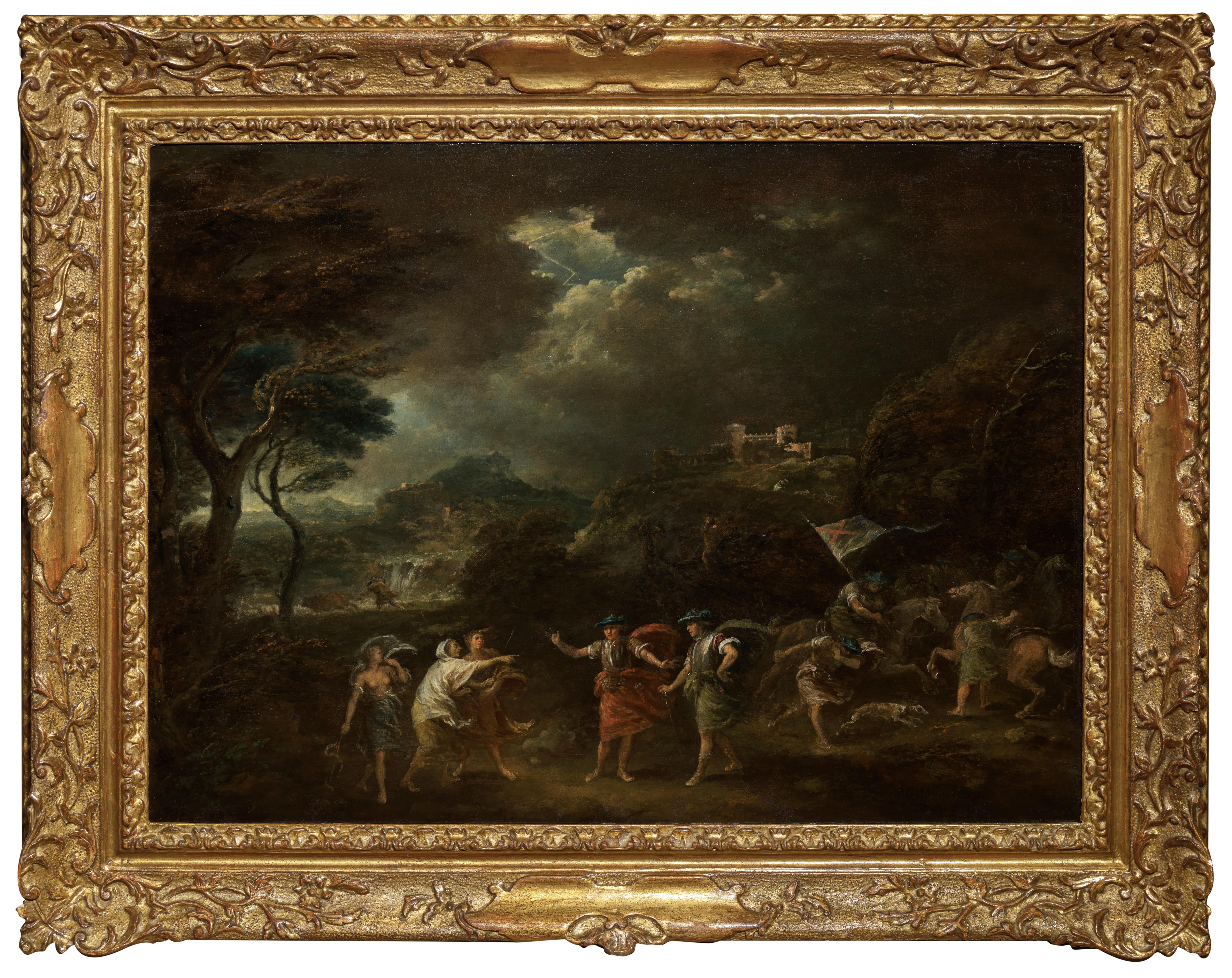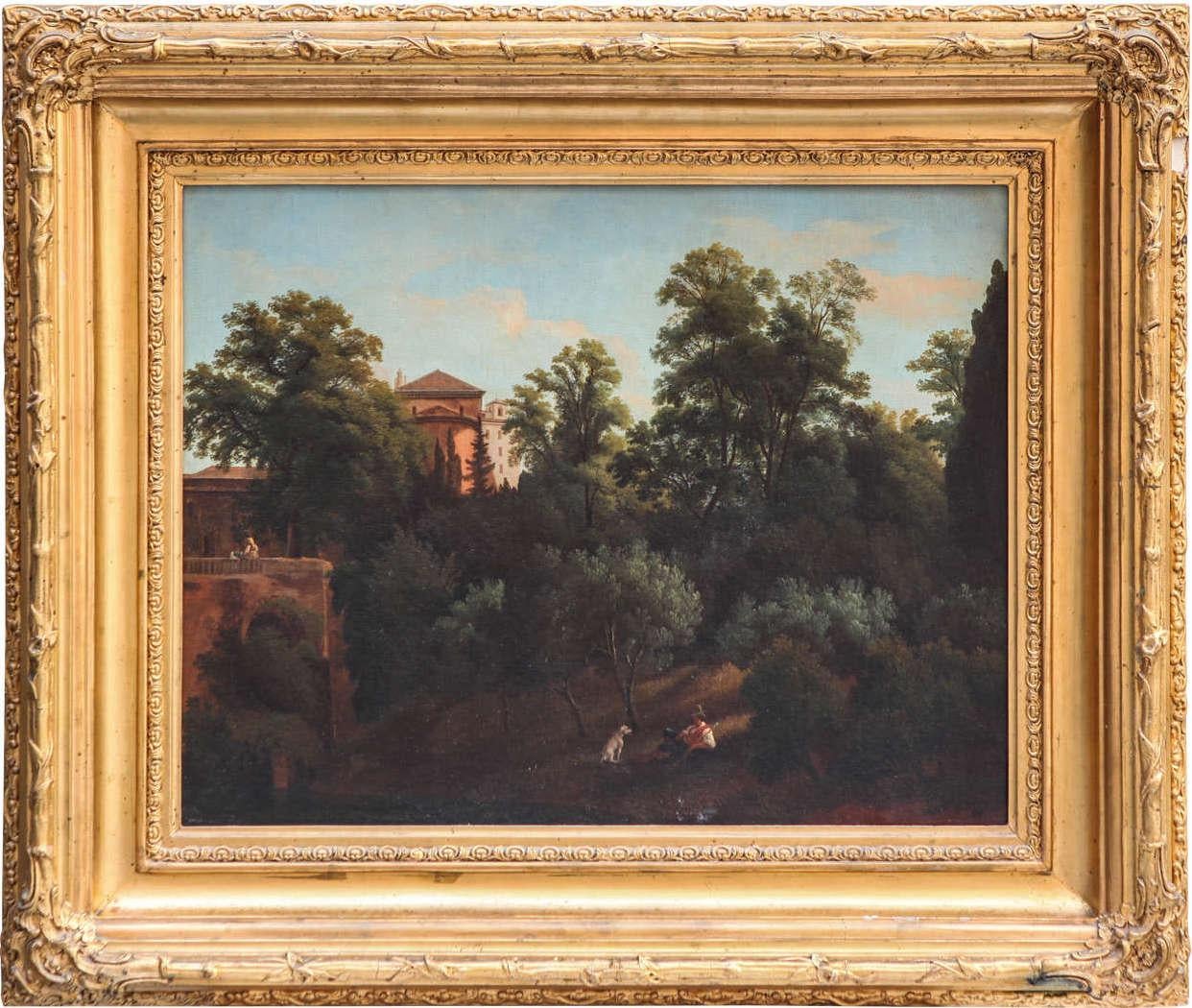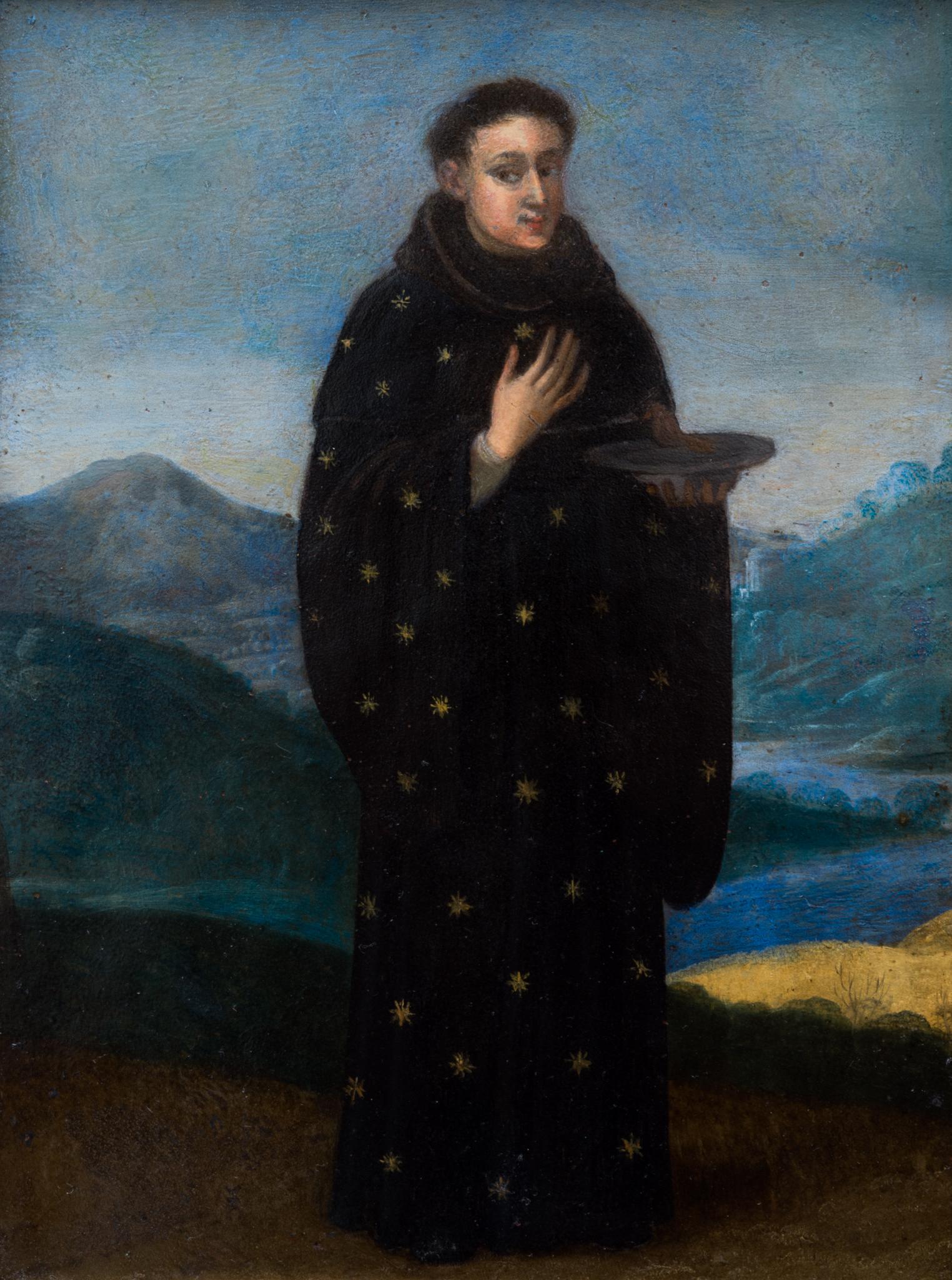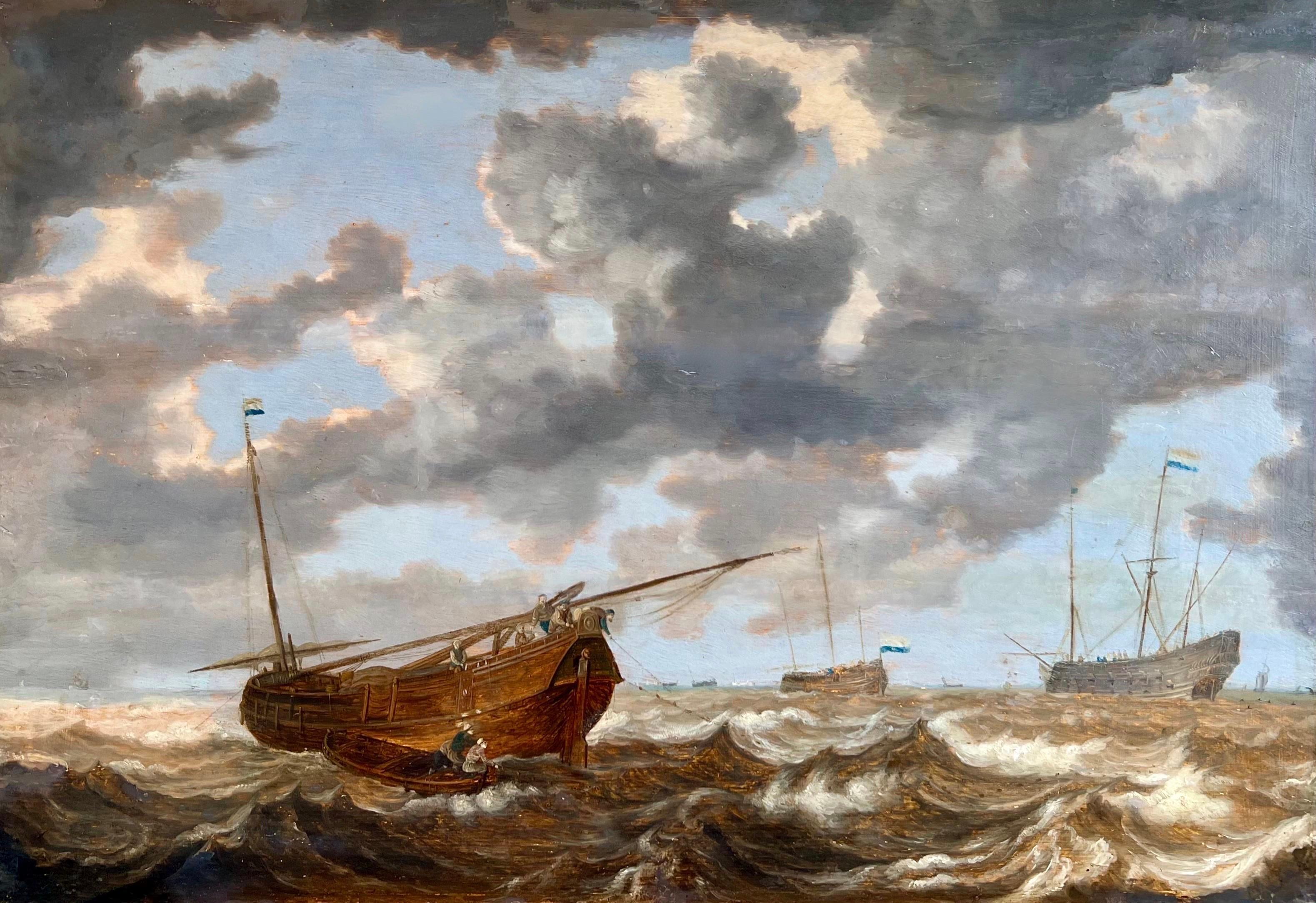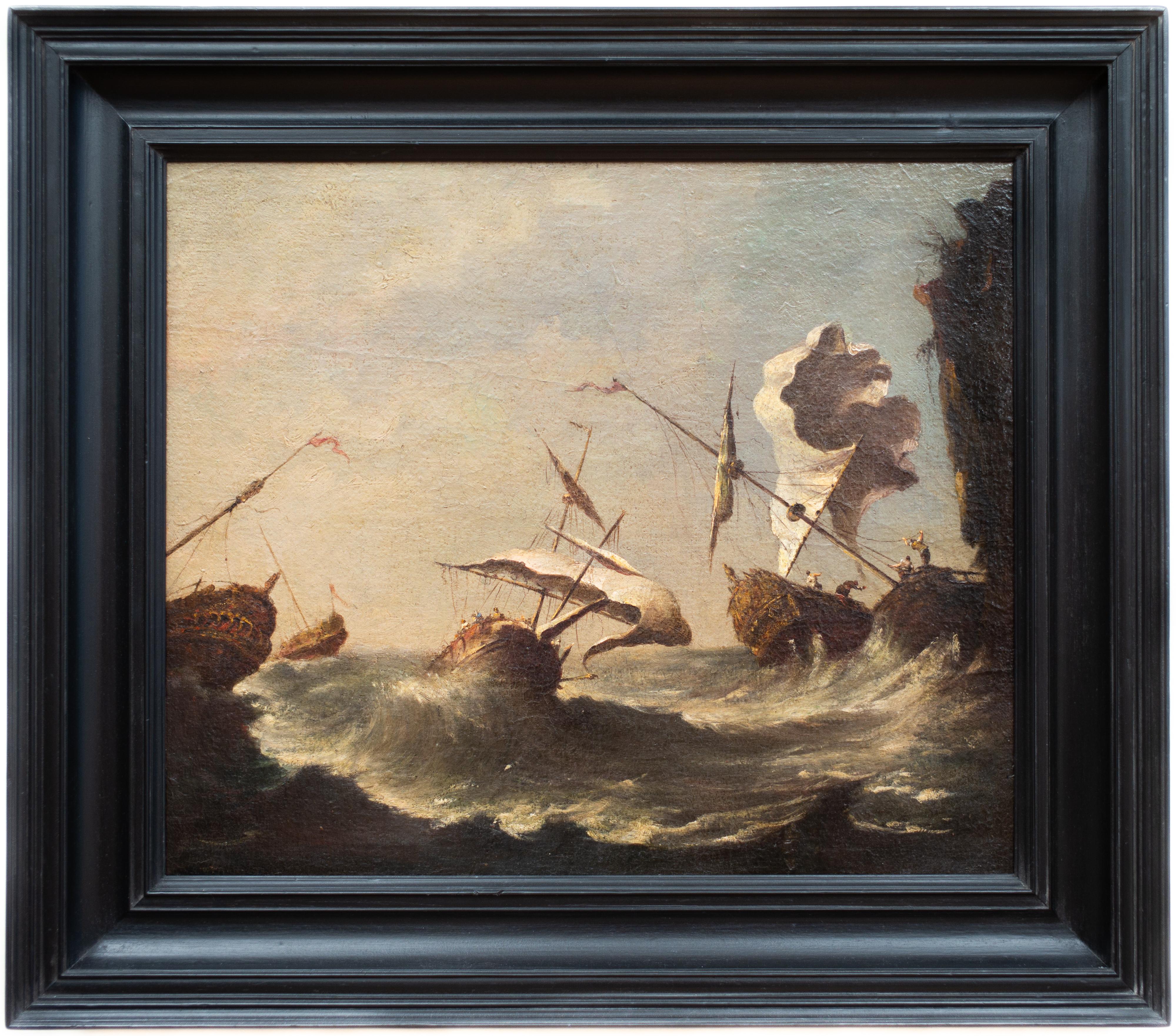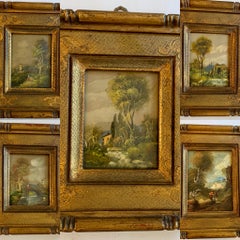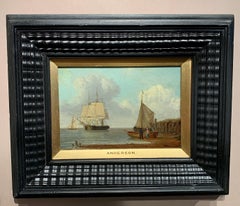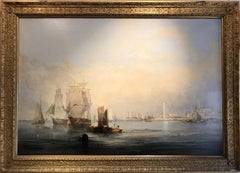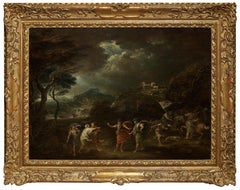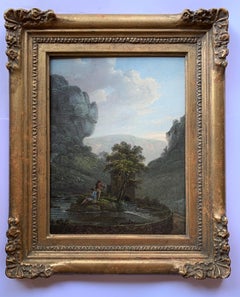
Early 19th century English River landscape with fishermen
Want more images or videos?
Request additional images or videos from the seller
1 of 11
UnknownEarly 19th century English River landscape with fishermen
About the Item
- Dimensions:Height: 14.5 in (36.83 cm)Width: 12 in (30.48 cm)
- Medium:
- Movement & Style:
- Period:
- Condition:
- Gallery Location:Woodbury, CT
- Reference Number:1stDibs: LU50736035492
About the Seller
5.0
Platinum Seller
These expertly vetted sellers are 1stDibs' most experienced sellers and are rated highest by our customers.
Established in 1983
1stDibs seller since 2016
405 sales on 1stDibs
More From This SellerView All
- Late 18th century Antique English Moonlight over a lake and church landscapeBy Henry PetherLocated in Woodbury, CTHenry Pether, late 18th-century Moonlight lake Landscape. Born into a family of artists, Henry was the son of Abraham Pether (1756-1812), a talented la...Category
1790s Old Masters Landscape Paintings
MaterialsCanvas, Oil
Henry PetherLate 18th century Antique English Moonlight over a lake and church landscape, circa 1790$14,800 Sale Price20% OffFree Shipping - Five mid 20th century Italian oil landscapes with figures, castles, ChurchsLocated in Woodbury, CTA very interesting set of five mid-20th-century Italian oils on copper. All five are classical landscape subjects and are signed Roger, though we don't know which artist with the n...Category
1950s Old Masters Landscape Paintings
MaterialsCopper
$5,560 Sale Price20% OffFree Shipping - Antique English 19th century marine sceneBy William AndersonLocated in Woodbury, CTOutstanding English late 18th / early 19th century marine scene by one of Britain's best known and sought after painters. William (or Wiliam) Anderson (1757 – 27 May 1837) was a Scottish artist specializing in maritime and patriotic themes. He was well-regarded for his detailed and accurate portraits of ships under sail, exhibiting his works annually in London between 1787 and 1811 and then occasionally until 1834. Anderson influenced other artists, notably John Ward and others of the Hull school. Anderson's early life is obscure, but he is known to have trained as a shipwright before moving to London to become a maritime painter when he was about 30. His training served him well as a painter, providing "a practical nautical knowledge" of his subjects. He earned a reputation for "accuracy and refinement of detail" and was admired for his bright, clear colours. He worked in both oils and watercolours. He based his style on that of well-known Dutch maritime...Category
1810s Old Masters Figurative Paintings
MaterialsOil, Wood Panel
$6,360 Sale Price20% OffFree Shipping - English mid century beach and landscape scene, with fishing boats and fishermenLocated in Woodbury, CTEnglish mid century beach and landscape scene, with fishing boats and fishermen Ernest Wills was an English painter from the 1930-1960 period in England....Category
1960s Impressionist Landscape Paintings
MaterialsOil
$1,960 Sale Price20% OffFree Shipping - English Impressionist landscape , late 19th century with horse hay cart, cottageLocated in Woodbury, CTVery decorative and well painted British or Scottish landscape with horse, Haycart, figures and a cottage. Dating from circa 1900 this is a very pretty example of late Victorian Br...Category
Early 1900s Impressionist Landscape Paintings
MaterialsOil
$2,360 Sale Price20% OffFree Shipping - Early evening twilight Impressionist landscape scene of a Cornish Village oil.By Richard Hayley LeverLocated in Woodbury, CTEnglish Impressionist landscape/Town scene of a Cornish town, possibly Newlyn. An Australian by birth, Richard Hayley Lever left his native Adelaide at the age of 17 to train as an ...Category
1910s Impressionist Landscape Paintings
MaterialsOil
$3,000 Sale Price20% OffFree Shipping
You May Also Like
- Grand 19th Century English Marine Painting in Stunning LightBy John Wilson EwbankLocated in London, GBJohn Wilson Ewbank (1799 - 1847) Shipping in the Harbour, South Shields Oil on canvas 39.5 x 58 inches unframed 47.75 x 66.5 inches framed Provenance: Christie's October 2002; Lot 11. Fine Art Society; Private Collection This marvellous up to scale Ewbank is full of light and warmth and almost certainly his greatest work of the sort rarely - if ever - seen on the market. John W. Ewbank (4 May 1799–28 November 1847), was an English-born landscape and marine painter largely operational from Scotland. The Humber river is a large tidal estuary on the east coast of Northern England. Life Ewbank was born at Darlington on 4 May 1799, the son of Michael Ewbank, an innkeeper. He was adopted as a child by a wealthy uncle who lived at Wycliffe, on the banks of the River Tees, in the North Riding of Yorkshire. Intended for the Roman Catholic priesthood, he was sent to Ushaw College, from which he absconded. In 1813 Ewbank was apprenticed to Thomas Coulson, an ornamental painter in Newcastle. In around 1816 he moved with Coulson to Edinburgh, where he had some lessons with Alexander Nasmyth. He found work both as a painter and a teacher. He was nominated in 1830 one of the foundation members of the Royal Scottish Academy. In 1833 he is listed as living at 7 Union Street on the eastern fringe of the New Town in Edinburgh. Works His sketches from nature were especially admired, and a series of 51 drawings of Edinburgh by him were engraved by W. H. Lizars for James Browne's Picturesque Views of Edinburgh (1825). He also made a reputation with cabinet pictures of banks of rivers, coast scenes, and marine subjects. As an illustrator he illustrated some early editions of Scott's Waverley Novels and one edition of Gilbert White...Category
19th Century Old Masters Figurative Paintings
MaterialsOil
$186,507Free Shipping - Important 18th Century Royal Academy Old Master Oil Painting of Georgian LondonLocated in Gerrards Cross, GB‘St. James’ Day’ by Richard Morton Paye (1750-1820). This very large and important 18th century oil on canvas depicts a diverse crowd of Londoners at an oyster stand on a summer’s ev...Category
1780s Old Masters Figurative Paintings
MaterialsOil
- Macbeth and the Three Witches a Painting on Panel by Francesco ZuccarelliBy Francesco ZuccarelliLocated in PARIS, FRThis painting, created during Zuccarelli's stay in England, represents the decisive moment when Macbeth, together with Banquo, meets the three witches who announce that he will be Ki...Category
1760s Old Masters Landscape Paintings
MaterialsOil, Wood Panel
- Villagers in a Landscape - Flemish 17thC art figurative landscape oil paintingLocated in London, GBThis fantastic Flemish 17th century Old Master oil painting is by Thomas Van Apshoven. It was painted circa 1650 and depicts a village with figures outside a tavern, eating, drinking and dancing. Beyond are more dwellings, villagers and animals, all under a blue summer's sky. The detail, brushwork and vibrant colouring are superb. This is an excellent example of Apshoven's work and a typical subject he loved to paint. Provenance. Leominster estate. Wax stamp verso. Condition. Oil on panel, 22 inches by 17 inches and in good condition. Frame. Housed In beautiful gilt frame, 30 inches by 25 inches and in good condition. Thomas van Apshoven (1622– 1664) was a Flemish painter known for his landscapes with peasant scenes and genre scenes in interiors. His genre scenes depict village festivals, the interiors of taverns, village scenes or landscapes with peasants engaged in various activities, singeries, guardroom scenes and laboratories of alchemists. Some still lifes have also been attributed to him. His themes and style are close to that of David Teniers the Younger. He was born on 30 November 1622 in Antwerp as the eldest son of Ferdinand van Apshoven the Elder and Leonora Wijns. His father was a painter who had studied with Adam van Noort and had become a master of the Antwerp Guild of Saint Luke in 1596. No paintings by his father are known. His younger brother Ferdinand van Apshoven the Younger became also a successful painter. Thomas studied under his father. Some sources state that he became a pupil of the prominent genre painter David Teniers the Younger. It is more likely, however, that he was an imitator of Teniers. He was registered as a 'wijnmeester' [son of a master] in the Guild of St. Luke of Antwerp in the guild year 1645–1646. He married Barbara Janssens on 22 March 1645. The couple had four children. The godfathers of the children included the painters Victor Wolfvoet...Category
1650s Old Masters Figurative Paintings
MaterialsOil
- Italian Landscape with Jack Players, a painting by Gaspard Dughet (1615 - 1675)By Gaspard DughetLocated in PARIS, FRHere Gaspard Dughet offers us an idyllic vision of the Roman countryside. The stages follow one another in a perfectly structured composition, revealing here a lake, there travellers walking along, gradually leading our eye to the blue horizon. But behind its classical composition, this landscape is particularly interesting because of three anthropomorphic details that the artist has hidden, opening the way to a radically different interpretation... 1. Gaspard Dughet, a landscape artist in the light of Poussin Gaspard Dughet was born on June 4th, 1615 in Rome where his father, of French origin, was a pastry cook. He was probably named Gaspard in honour of his godfather Baron Gaspard de Morant, who was, or may have been, his father's employer. His older sister Jeanne married the painter Nicolas Poussin (1594 - 1655) on September 1st, 1630. The young Gaspard was apprenticed with his brother-in-law at the beginning of 1631, which led his entourage to name him Gaspard Poussin. The first preserved works of the painter date from the years 1633-1634 and were painted in Poussin’s studio. Around 1635, Gaspard Dughet became emancipated and began to frequent the Bamboccianti circle. In 1636, he became friends with the painter Jean Miel (1599 - 1656), but also with Pier Francesco Mola (1612 - 1666) and Pietro da Cortona (1596 - 1669). This was also the time of his first trips throughout Italy. The painter, although of French origin, appears never to have visited France. In 1646 he settled permanently in Rome. A recognized painter with a solid book of orders, he remained faithful to landscape painting throughout his life, alternating between cabinet paintings and large decorative commissions, using both oil and fresco. Nailed to his bed by rheumatic fever at the age of 58, he died on May 25, 1675. 2. Discovering an idealized landscape Beyond a relatively dark foreground that takes us into the landscape, we discover a vast bluish horizon: a plateau surrounded by deep ravines advances to the right, overhanging an expanse of water that sparkles below. A road winds through a mountainous mass as if leading us to the fortress that crowns it; another town appears in the distance at the foot of three conical mountains. The composition is rigorous, mineral, and structured by geometric volumes. The various stages in the landscape lead one to the next attracting the eye towards the horizon located in the middle of the canvas. The general impression is that of a welcoming and serene nature. In many places the paint layer has shrunk, or become transparent, revealing the dark red preparation with which the canvas was covered and accentuating the contrasts. Human presence is limited to three jack players, leaning against a mound in the foreground. Their long garments, which may evoke Roman togas, contribute to the timelessness of the scene. Close examination of the canvas reveals two other travellers on the path winding between the rocks. Made tiny by the distance, their introduction in the middle register, typical of Dughet's art, lengthens the perspective. While it is difficult to date the work of a painter who devoted his entire life to the representation of landscapes, it is certain that this painting is a work from his later years. The trees that occupied the foreground of his youthful compositions have been relegated to the sides, a stretch of water separates us from the arid mountains counterbalanced by two trees represented on the opposite bank. The introduction of this stretch of water in the middle of the landscape betrays the influence of the Bolognese and in particular of the Dominiquin (1581 - 1641) A number of similarities with a drawing in the British Museum might suggest a date around 1656-1657, since, according to Marie-Nicole Boisclair , it has been compared with the Prado's Landscape with the Repentant Magdalene, painted at that period. 3. Three amazing anthropomorphic details While some late Renaissance landscapes offer a radical double reading, allowing one to see both a face or a human body behind the representation of a landscape, it seems interesting to us to hypothesize that Gaspard Dughet had fun here by slipping in a few details that, taken in isolation, evoke human or animal figures. We will give three examples, looking closely at a cloud, the trunk of a broken tree and the top of a cliff. The main cloud could thus evoke a Christ-like face or that of an antique god...Category
1650s Old Masters Landscape Paintings
MaterialsOil
- 17th Century by Simone Cantarini Adoration of The Magi Painting Oil on CanvasLocated in Milano, LombardiaSimone Cantarini (Pesaro 1612 - Verona 1648) Adoration of the Magi Oil on paper applied to canvas, cm. 16,5 x 24 – with frame cm. 22 x 29 Antique sh...Category
Early 17th Century Old Masters Figurative Paintings
MaterialsCanvas, Cotton Canvas, Oil
Recently Viewed
View AllMore Ways To Browse
Framed Impressionist Water Colors
New England Bird
Vintage Impressionist Landscape Oil Paintings
Western Sketch
French Paintings Nineteenth Century
Oil Paintings Of Sailboats
Wooden Salon
Plein Air Tree
Southwest New Mexico Paintings
36 X 44
French Street Sign Antique Signs French Signs
Rural Village
St Ives Art
Large Landscape Scotland
Vintage Window View
Ocean Waves Oil Painting
Paris Cityscapes Oil Paintings
Impressionist Paintings Camille Pissarro

